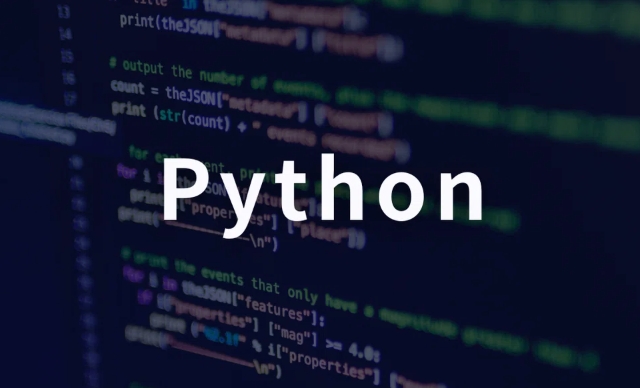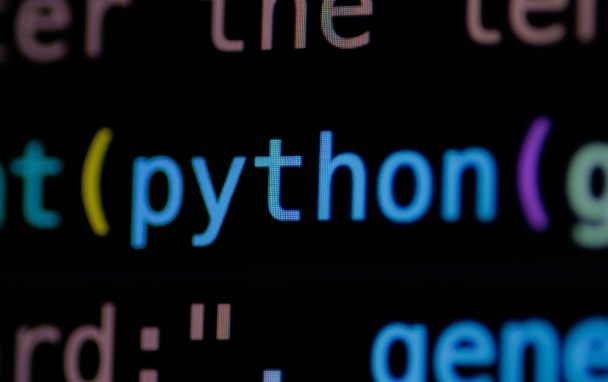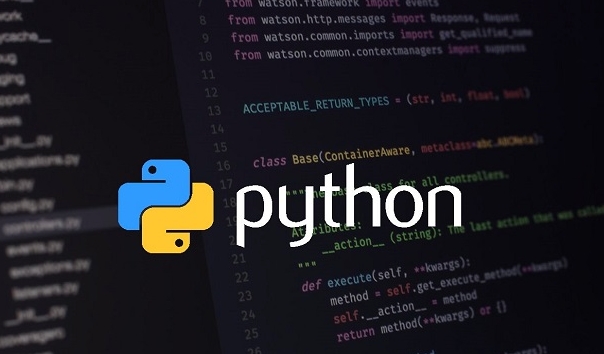There are three main methods for handling queues and message passing in Python: using queue.Queue to achieve inter-thread communication, which is thread-safe. Data is added and obtained by creating queue instances and calling put() and get() methods, and task_done() is required to notify the task to be completed; multiprocessing.Queue is used in multiprocessing scenarios, which supports cross-process communication, and the underlying data is transmitted through pipelines and serialization. It is recommended to use basic or serializable types; third-party libraries such as Celery, ZeroMQ, and RQ extension functions can also be used to meet complex needs, but the deployment and maintenance costs need to be weighed. Master the built-in Queue and select external libraries according to your needs to deal with most scenarios.

Handling queues and messaging in Python is usually to enable communication between multi-threaded, multi-process tasks, or to build a producer-consumer model. The core goal is to enable data exchange between different task modules to be securely exchanged while avoiding problems such as resource competition.

Use queue.Queue to achieve inter-thread communication
queue.Queue in the Python standard library is a thread-safe queue implementation, which is very suitable for messaging in multithreaded environments. It already handles the lock mechanism internally, so you don't need to add an extra lock to pass data between multiple threads safely.

The usage is also very simple:
- Create a queue instance:
q = queue.Queue() - The producer calls
q.put(item)to add data - The consumer calls
q.get()to get data - After processing, you must call
q.task_done()to notify the queue task to complete
For example, you can start multiple consumer threads to get task execution from the same queue. If the queue is empty, get() will block until a new task arrives.

It should be noted that by default, Queue is first-in-first-out (FIFO), but you can also use LifoQueue to implement last-in-first-out, or PriorityQueue to sort by priority.
Use multiprocessing.Queue in multiprocessing scenarios
When you need to pass messages between multiple processes, you can no longer use queue.Queue because normal queues cannot be shared across processes. At this time, multiprocessing.Queue should be used, which is specially designed for multiprocessing.
It is used in a similar way to the standard Queue:
- Import and create:
from multiprocessing import Queue; q = Queue() - Communication is achieved by sharing this queue object between processes
- Also supports
put()andget()methods
However, it should be noted that the underlying implementation of multiprocessing.Queue is used to transmit data through pipelines and serialization, so there are certain restrictions on the data types placed. It is recommended to use basic types or serializable objects.
Extend functionality using third-party library
If you need more advanced message queueing functions, such as persistence, broadcasting, delay queueing, etc., you can consider using a third-party library, such as:
- Celery : Suitable for distributed task scheduling, combined with RabbitMQ or Redis as broker
- ZeroMQ : Provides flexible messaging modes suitable for network communication and microservice architectures
- Redis Queue (RQ) : A lightweight task queue that relies on Redis to store task information
These tools can help you achieve reliable messaging mechanisms in complex systems, but also increase deployment and maintenance costs. Before making a choice, you should make trade-offs based on the project size and needs.
Basically that's it. Mastering the built-in Queue type and then deciding whether to introduce external libraries according to actual needs, you can deal with most messaging scenarios.
The above is the detailed content of Working with Queues and Message Passing in Python. For more information, please follow other related articles on the PHP Chinese website!

Hot AI Tools

Undress AI Tool
Undress images for free

Undresser.AI Undress
AI-powered app for creating realistic nude photos

AI Clothes Remover
Online AI tool for removing clothes from photos.

Clothoff.io
AI clothes remover

Video Face Swap
Swap faces in any video effortlessly with our completely free AI face swap tool!

Hot Article

Hot Tools

Notepad++7.3.1
Easy-to-use and free code editor

SublimeText3 Chinese version
Chinese version, very easy to use

Zend Studio 13.0.1
Powerful PHP integrated development environment

Dreamweaver CS6
Visual web development tools

SublimeText3 Mac version
God-level code editing software (SublimeText3)
 Polymorphism in python classes
Jul 05, 2025 am 02:58 AM
Polymorphism in python classes
Jul 05, 2025 am 02:58 AM
Polymorphism is a core concept in Python object-oriented programming, referring to "one interface, multiple implementations", allowing for unified processing of different types of objects. 1. Polymorphism is implemented through method rewriting. Subclasses can redefine parent class methods. For example, the spoke() method of Animal class has different implementations in Dog and Cat subclasses. 2. The practical uses of polymorphism include simplifying the code structure and enhancing scalability, such as calling the draw() method uniformly in the graphical drawing program, or handling the common behavior of different characters in game development. 3. Python implementation polymorphism needs to satisfy: the parent class defines a method, and the child class overrides the method, but does not require inheritance of the same parent class. As long as the object implements the same method, this is called the "duck type". 4. Things to note include the maintenance
 Explain Python generators and iterators.
Jul 05, 2025 am 02:55 AM
Explain Python generators and iterators.
Jul 05, 2025 am 02:55 AM
Iterators are objects that implement __iter__() and __next__() methods. The generator is a simplified version of iterators, which automatically implement these methods through the yield keyword. 1. The iterator returns an element every time he calls next() and throws a StopIteration exception when there are no more elements. 2. The generator uses function definition to generate data on demand, saving memory and supporting infinite sequences. 3. Use iterators when processing existing sets, use a generator when dynamically generating big data or lazy evaluation, such as loading line by line when reading large files. Note: Iterable objects such as lists are not iterators. They need to be recreated after the iterator reaches its end, and the generator can only traverse it once.
 How to handle API authentication in Python
Jul 13, 2025 am 02:22 AM
How to handle API authentication in Python
Jul 13, 2025 am 02:22 AM
The key to dealing with API authentication is to understand and use the authentication method correctly. 1. APIKey is the simplest authentication method, usually placed in the request header or URL parameters; 2. BasicAuth uses username and password for Base64 encoding transmission, which is suitable for internal systems; 3. OAuth2 needs to obtain the token first through client_id and client_secret, and then bring the BearerToken in the request header; 4. In order to deal with the token expiration, the token management class can be encapsulated and automatically refreshed the token; in short, selecting the appropriate method according to the document and safely storing the key information is the key.
 How to iterate over two lists at once Python
Jul 09, 2025 am 01:13 AM
How to iterate over two lists at once Python
Jul 09, 2025 am 01:13 AM
A common method to traverse two lists simultaneously in Python is to use the zip() function, which will pair multiple lists in order and be the shortest; if the list length is inconsistent, you can use itertools.zip_longest() to be the longest and fill in the missing values; combined with enumerate(), you can get the index at the same time. 1.zip() is concise and practical, suitable for paired data iteration; 2.zip_longest() can fill in the default value when dealing with inconsistent lengths; 3.enumerate(zip()) can obtain indexes during traversal, meeting the needs of a variety of complex scenarios.
 What are python iterators?
Jul 08, 2025 am 02:56 AM
What are python iterators?
Jul 08, 2025 am 02:56 AM
InPython,iteratorsareobjectsthatallowloopingthroughcollectionsbyimplementing__iter__()and__next__().1)Iteratorsworkviatheiteratorprotocol,using__iter__()toreturntheiteratorand__next__()toretrievethenextitemuntilStopIterationisraised.2)Aniterable(like
 Explain Python assertions.
Jul 07, 2025 am 12:14 AM
Explain Python assertions.
Jul 07, 2025 am 12:14 AM
Assert is an assertion tool used in Python for debugging, and throws an AssertionError when the condition is not met. Its syntax is assert condition plus optional error information, which is suitable for internal logic verification such as parameter checking, status confirmation, etc., but cannot be used for security or user input checking, and should be used in conjunction with clear prompt information. It is only available for auxiliary debugging in the development stage rather than substituting exception handling.
 What are Python type hints?
Jul 07, 2025 am 02:55 AM
What are Python type hints?
Jul 07, 2025 am 02:55 AM
TypehintsinPythonsolvetheproblemofambiguityandpotentialbugsindynamicallytypedcodebyallowingdeveloperstospecifyexpectedtypes.Theyenhancereadability,enableearlybugdetection,andimprovetoolingsupport.Typehintsareaddedusingacolon(:)forvariablesandparamete
 Python FastAPI tutorial
Jul 12, 2025 am 02:42 AM
Python FastAPI tutorial
Jul 12, 2025 am 02:42 AM
To create modern and efficient APIs using Python, FastAPI is recommended; it is based on standard Python type prompts and can automatically generate documents, with excellent performance. After installing FastAPI and ASGI server uvicorn, you can write interface code. By defining routes, writing processing functions, and returning data, APIs can be quickly built. FastAPI supports a variety of HTTP methods and provides automatically generated SwaggerUI and ReDoc documentation systems. URL parameters can be captured through path definition, while query parameters can be implemented by setting default values ??for function parameters. The rational use of Pydantic models can help improve development efficiency and accuracy.






